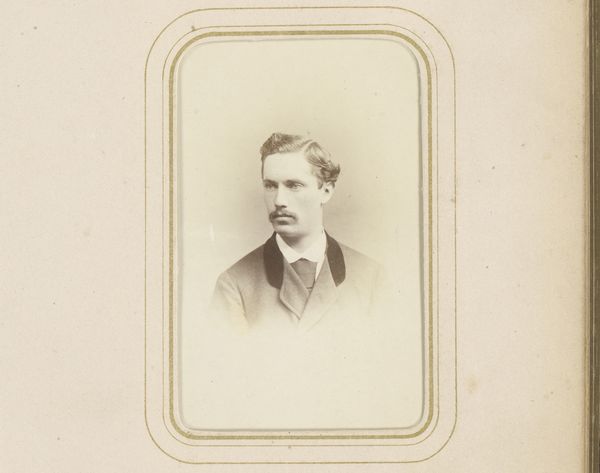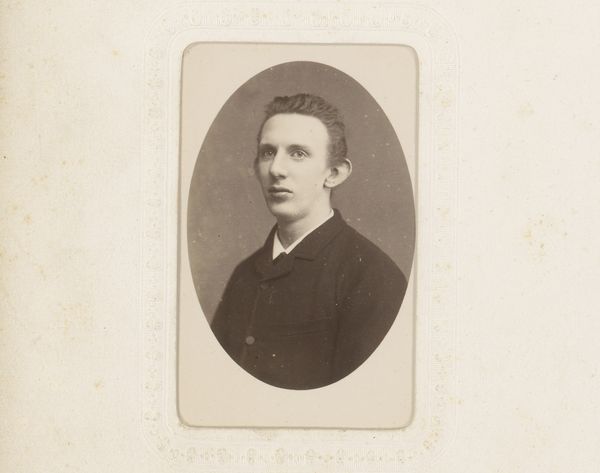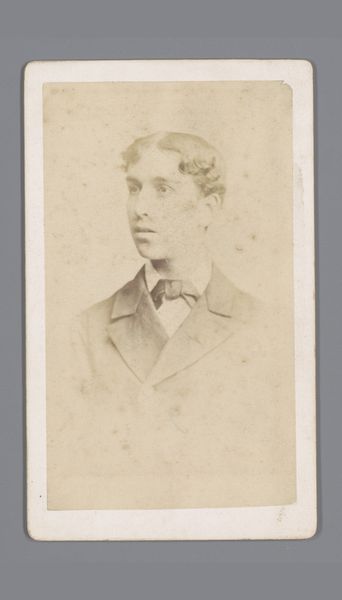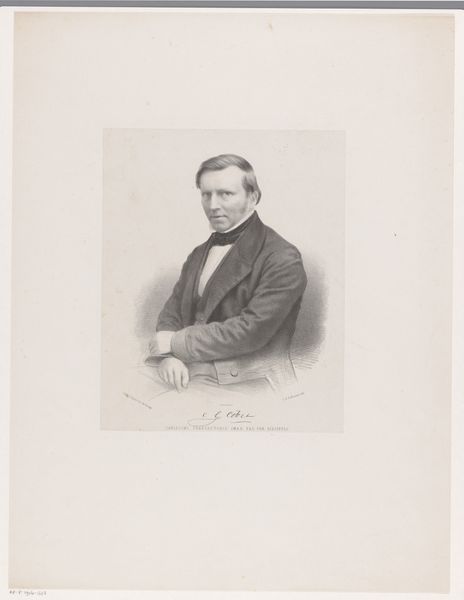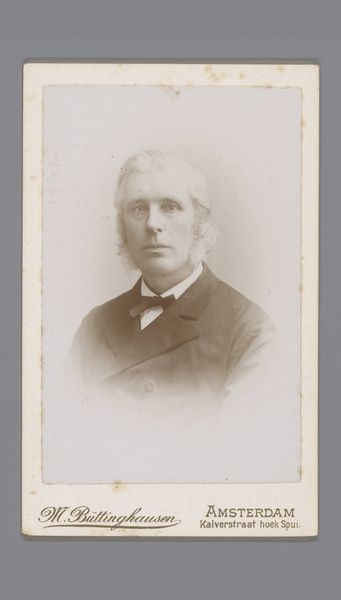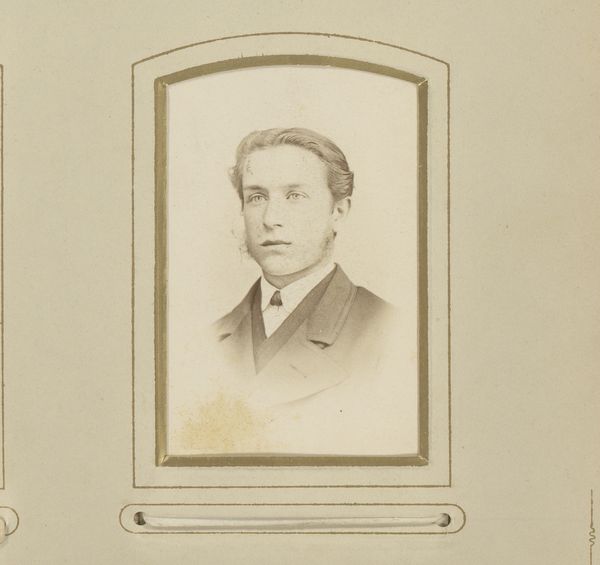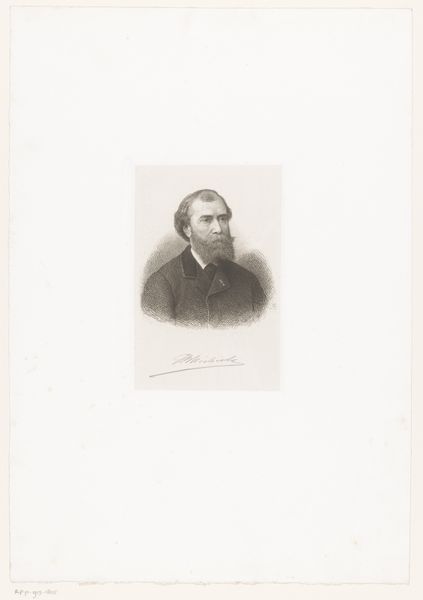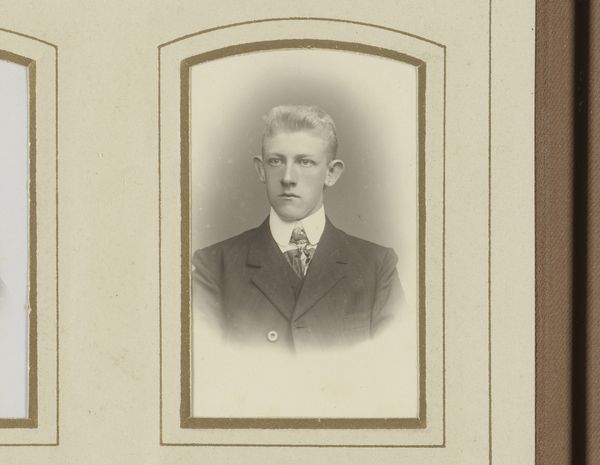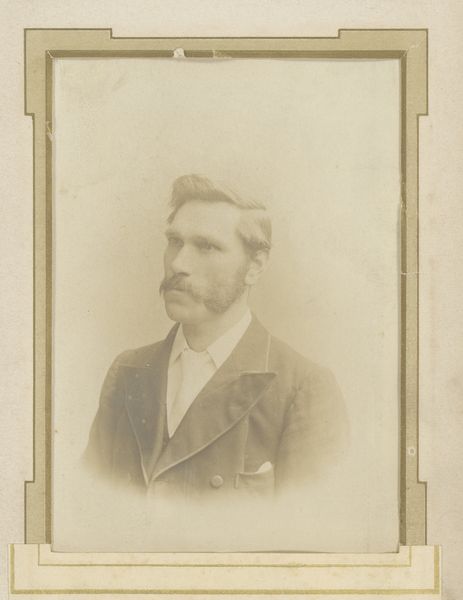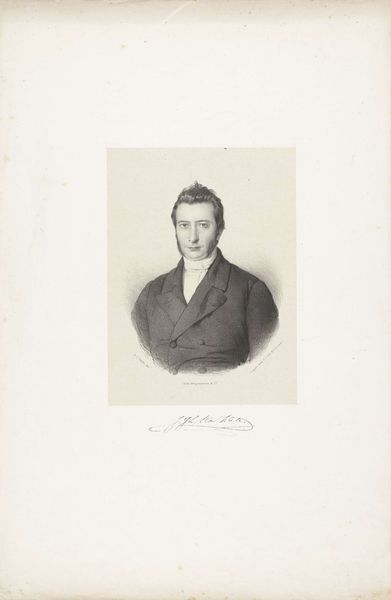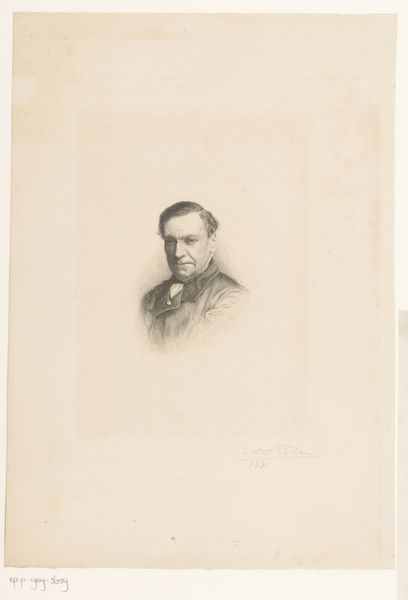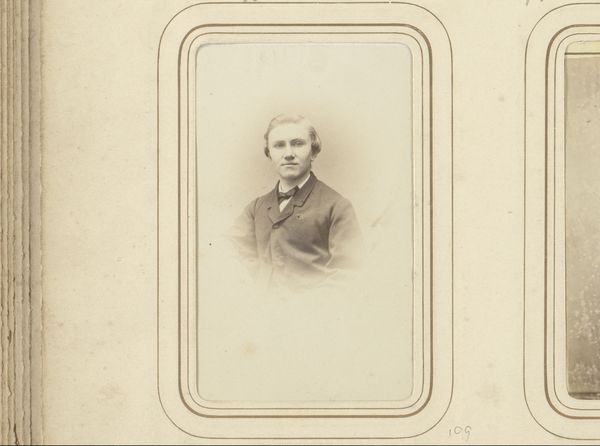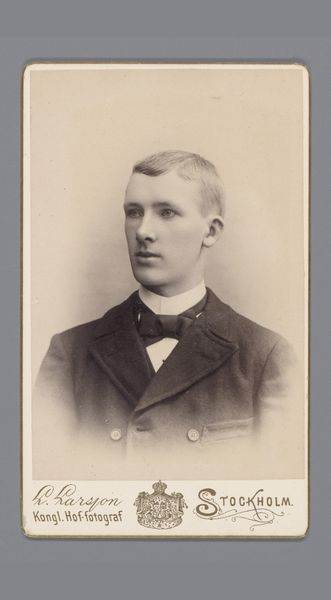
drawing, print, graphite, engraving
portrait
drawing
graphite
portrait drawing
engraving
realism
Dimensions: height 147 mm, width 93 mm
Copyright: Rijks Museum: Open Domain
Editor: This is a print of "Portret van Ernest Alexandre Honoré Coquelin" by Alphonse Descaves, created sometime between 1840 and 1890. The materials used include graphite and engraving. I’m struck by how lifelike the subject is rendered despite the limitations of the medium. What stands out to you in this piece? Curator: It is precisely the masterful control of line and tone that commands attention. Observe how the artist uses varying densities of cross-hatching to model the forms, creating depth and volume with a limited palette. The hatching doesn’t simply mimic light, it builds its own reality, doesn’t it? Editor: Yes, it really does. The face has so much character because of the detail, and it feels contemporary even though it's over a century old. Does the technique of engraving anything to its expressive content, do you think? Curator: Indeed, the linear nature of engraving lends itself to precision, objectivity and graphic impact. What would the effect have been using charcoal? This approach suits a portrait, one intent on documenting specifics through an accumulation of minute detail. Also notice how the lack of background puts emphasis on the formal aspects, particularly the rendering of the coat and the neckwear. Editor: That's a great point. I hadn't considered how the background, or lack thereof, contributes. Thinking about the interplay between the line and tone, I can better understand the power of this formal approach. Curator: Precisely. This piece showcases how skillful handling of technique can elevate a portrait beyond mere likeness.
Comments
No comments
Be the first to comment and join the conversation on the ultimate creative platform.
